Date 25 December 1989 Location Romania | Date decided December 25, 1989 Date argued December 25, 1989 | |
 | ||
The trial of Nicolae and Elena Ceaușescu was a short trial held on 25 December 1989 by an Exceptional Military Tribunal, a drumhead court-martial created at the request of the Council of the National Salvation Front, resulting in the death sentence and execution of former Romanian President and General Secretary of the Romanian Communist Party Nicolae Ceaușescu and his wife, Elena Ceaușescu.
Contents
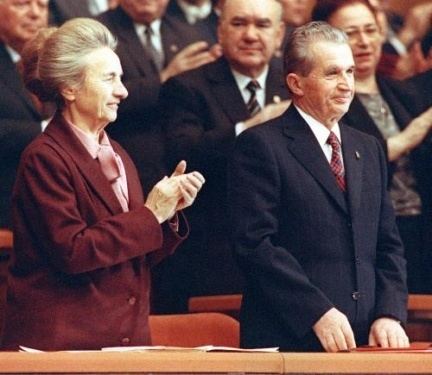
Considered by the BBC a kangaroo court or a show trial, the main charge was genocide—namely, murdering "over 60,000 people" during the revolution in Timișoara. Other sources said the death toll is 689 or hundreds of people. Nevertheless, the charges did not affect the trial, as the verdict had been already decided before the Tribunal had been created; General Victor Stănculescu had brought with him a specially selected team of paratroopers from a crack regiment, handpicked earlier in the morning to act as a firing squad. Before the legal proceedings began, Stănculescu had already selected the spot where the execution would take place—along one side of the wall in the barracks' square.

Nicolae Ceaușescu refused to recognize the Tribunal, arguing its lack of constitutional basis and claiming that the revolutionary authorities were part of a Soviet plot.
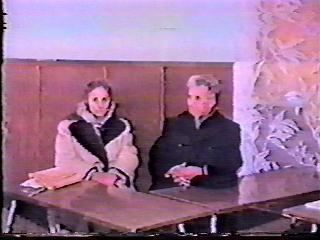
Arrest
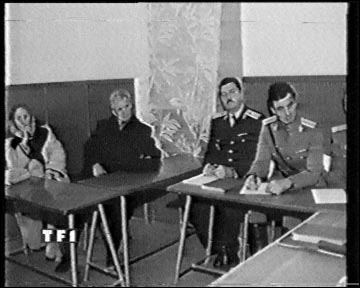
On 22 December, during the Romanian Revolution, Nicolae and Elena Ceaușescu left the Central Committee building in Bucharest by helicopter toward Snagov, from which they left soon after towards Pitești. The helicopter pilot claimed to be in danger of anti-aircraft fire, so he landed on the Bucharest–Târgoviște road, near Găești. They stopped a car driven by a certain Dr. Nicolae Decă, who took them to Văcăreşti, after which he informed the local authorities that the Ceaușescus were going toward Târgoviște. The Ceaușescus took another car and told its driver, Nicolae Petrisor, to drive them to Târgoviște. During the trip, the Ceaușescus heard news of the revolution on the car radio (by then the revolutionaries had taken control of the state media), causing Ceaușescu to angrily denounce the revolution as a coup d'etat. Petrisor took the couple to an agricultural center near Târgoviște, where the Ceaușescus were locked in an office and were later arrested by soldiers from a local army garrison.
Creation of the tribunal
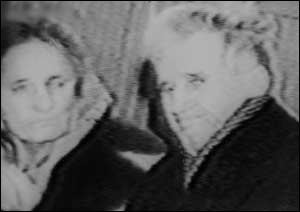
As the new authorities heard the news of their apprehension from General Andrei Kemenici, the commander of the army unit, they began to discuss what to do with the Ceaușescus. Victor Stănculescu, who was Ceauşescu's last defence minister before going over to the revolution, wanted a quick execution, as did Gelu Voican Voiculescu. Ion Iliescu, Romania's provisional President, supported holding a trial first.
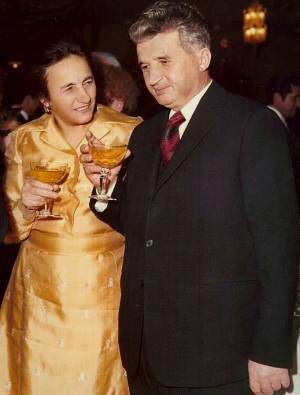
During the evening of 24 December, Stănculescu sent the secret code "recourse to the method" to Kemenici, referring to the execution of the Ceaușescus. A ten-member tribunal was formed to try the case. The members of the panel were all military judges.
Charges
The charges were published in Monitorul Oficial the day after the execution:
Counsel for the defense
The morning of the trial, prominent lawyer Nicu Teodorescu was having Christmas breakfast with his family when he was telephoned by an aide to Iliescu, and asked by the National Salvation Front to be the Ceaușescus' defense counsel. He replied that it "would be an interesting challenge". Teodorescu met the couple for the first time in the Târgoviște "court room", when he was given ten minutes to consult with his clients. With so little time to prepare any defense, he tried to explain to them that their best hope of avoiding the death sentence was to plead insanity. However, the Ceaușescus brushed away the idea. According to Teodorescu, "When [he] suggested it, Elena in particular said it was an outrageous set-up. They felt deeply insulted. ... They rejected [his] help after that."
Trial
The trial of Nicolae and Elena Ceaușescu was very brief, approximately an hour. Ceaușescu defended himself by arguing that the Tribunal was against the 1965 Constitution of Romania and that only the Great National Assembly had the power to depose him. He argued that it was a coup d'etat organized by the Soviets.
Nicolae and Elena Ceaușescu were convicted on all charges and condemned to death in a Stalinist-style trial. At one point, their forcibly-assigned lawyers abandoned their clients' defense and joined with the prosecutor, accusing them of capital crimes instead of defending them. No offer of proof was made for the Ceaușescus' alleged crimes. They were tried based on references, solely by offense-name or hearsay, to criminal acts they had committed in the opinion of prosecutors, or as alleged in press reports. Various irregularities presented themselves, or became apparent post-trial:
Before the execution, Nicolae Ceaușescu declared, "We could have been shot without having this masquerade!"
Execution
Just after the trial, the Ceaușescus were executed at 4:00 pm local time at a military base outside Bucharest on 25 December 1989. The killing was carried out by a firing squad consisting of elite paratroop regiment soldiers: Captain Ionel Boeru, Sergeant-Major Georghin Octavian and Dorin-Marian Cirlan, while reportedly hundreds of others also volunteered. The Ceaușescus' hands were tied by four soldiers before the execution. Before the sentences were carried out, Elena Ceaușescu screamed, "You motherfuckers!" while being led outside and lined up against the wall; at the same time Nicolae Ceaușescu sang "The Internationale". The firing squad began shooting as soon as the two were in position against a wall. In 1990, a member of the National Salvation Front reported that 120 bullets were found in the couple's bodies. The firing happened too soon for the film crew covering the events to record it in full; only the last round of shots was filmed. Others believe the shooting recorded in the trial footage was not from the actual execution but was staged afterwards, with soldiers firing a few more rounds into the corpses a second time, just for the camera. This was probably done to give the footage a more dramatic "climax" since the moment of the actual execution was missed by the film crew.
As the dust settled the cameraman, still filming, was seen walking towards the couple's bodies. Elena had fallen to her right while Nicolae had collapsed where he was. A soldier and a medical doctor then began to approach the bodies to confirm that the Ceaușescus had in fact been successfully executed. The cameraman requested that her blood soaked scarf which had fallen across Elena's head be lifted so her face could be clearly filmed. Similarly, while the doctor was confirming Nicolae Ceaușescus' death he was asked to lift up his head for the camera as well.
In 1989, Prime Minister Petre Roman told French television that the execution was carried out quickly due to rumors that loyalists would rescue the couple.
After the execution, the bodies were covered with canvas. The Ceaușescus' corpses were flown to Bucharest and buried five days later in Ghencea Cemetery on 30 December.
The hasty trial and the images of the dead Ceaușescus were videotaped and the footage promptly released in numerous western countries two days after the execution. Later that day, it was also shown on Romanian television. The Ceaușescus were the last people to be executed in Romania before the abolition of capital punishment on 7 January 1990.
Reactions
Valentin Ceauşescu, elder son of the Ceauşescus, argued in 2009 that the revolutionary forces should have killed his parents when they had arrested them on 22 December since they did not need any trial. After making vague comments about the incident, Iliescu stated that it was "quite shameful, but necessary". In a similar vein, Stanculescu told the BBC in 2009 that the trial was "not just, but it was necessary" because the alternative would have been seeing Nicolae lynched on the streets of Bucharest.
Several countries criticized the new rulers of Romania after the execution due to lack of public trial. The United States was the most leading critics of the trial, stating "We regret the trial did not take place in an open and public fashion."
